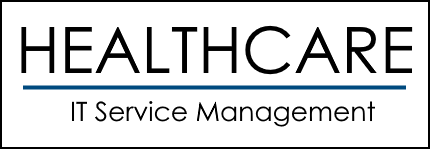The IT industry continues to grow and expand across all sectors. Customers and providers alike rely on the use of an enormous variety of technologies to inform, educate, and provide desired services and products. Utilizing IT successfully depends on many components, processes, and services working together across various platforms.
Why Is ITSM Important?
While businesses realize the absolute necessity of implementing technology to achieve goals, facilitate communication, and deliver services, many overlook the potential of IT services in favor of IT support. ITSM can help businesses across all industries realize the full potential of using technology to expand their opportunities.
No matter the industry, improved use of technology through ITSM can provide a variety of benefits such as:
- Cross-department collaboration
- IT and development teams coming together to streamline project creation
- Ease of sharing knowledge, promoting continuous improvement
- Better coordination to ensure efficient implementation
- More customer-centered services
- Speedier response to IT incidents
- Downtime prevention
The Purpose of ITSM
While there are many benefits of ITSM, some of the most critical roles and purposes include efficiency, reducing costs, promoting accountability, and improving visibility in operations.
Improved Efficiency
No matter the industry, many secondary benefits come with improving efficiency. You already know that enhanced technology can provide endless possibilities when it comes to improving the resources available to your business and your clients. It is critical to ensure that both parties can get the most out of these resources. IT service management utilizes a variety of components that analyze, optimize, and track your efforts to streamline your processes.
Reduction in Costs
The purpose of ITSM is to provide a variety of services you want with the standardization and efficiency you need to ensure you get the most out of your technology use. Standardization and efficiency provide you the strategies you need to save money while also scaling your business operations with ease. The strategy can be as simple as relying on regulated, automatic features that reduce the need for a manual workload, allowing your team to spend their time focusing on other aspects of business support and growth.

Greater Accountability
Business functions are typically structured as various tasks and responsibilities that are monitored and supported by multiple teams of people. For example, these functions could involve departments that monitor inventory, provide support, interact with customers, and perform necessary tasks. Thus, the overall success of a business relies on those responsible for each function to be able to come together to provide the intended service or process. Unfortunately, when one group, technology, or process is lacking, this can impact the success of the entire business.
Improved Visibility
Visibility of operations is beneficial to all levels of your organization, from management to client care and everywhere in between. Visibility refers to the way you provide avenues for all teams to see what is happening in other areas of the business. Lack of visibility can create several undesired issues for your business.

Examples of ITSM Processes
ITSM processes, also referred to as practices, encompass a variety of services designed to promote the integration of all technologies across your business. This ensures that the services provided are centered on the experience of the people involved, whether clients or employees. It is beneficial to learn about a few of the most critical processes to fully understand the benefits of implementing ITSM.
Knowledge Management
As it pertains to ITSM, knowledge management is the process of creating, sharing, utilizing, and managing the information or knowledge within your business for a variety of divisions and departments. Properly organizing and managing the vast amounts of information essential to a business helps you ensure proper communication and organizational structure throughout.
Financial Management
The last place you want to deal with human error or ineffective IT is when your finances are involved. An error in financial input, organization, or paperwork can cause serious issues for your business. ITSM takes the stress out of handling budgeting, accounts, and billing.
Service Request Management
No matter the products or services you provide, you want to create the best experience for employees as well as new and returning clients. Both groups are constantly generating requests, including requests for access to different applications, access to software updates, requests for hardware updates, and more. Service request management handles these various service requests and prioritizes them based on order of submission, urgency, or both. Automating request management provides access and knowledge employees or clients need on demand.
Incident and Problem Management

ITSM can prevent any unplanned events or interruptions to service that could affect your business or restore your system if an incident does occur. By nature, businesses rely on multiple different software services, platforms, and more, which can increase the risk of incidents taking place. When incidents happen, you’ll value the peace of mind knowing you have IT service management to take care of any issues on-demand.
ITSM not only addresses issues as they happen but also works to determine the root of the problem. In this way, ITSM provides value far beyond addressing problems as they arise. It identifies the cause of the incident and finds the best strategies to eliminate the problem from happening again in the future.
IT Asset Management
IT asset management, or ITAM, is a valuable process that ensures the various aspects of a business’s assets are accounted for, deployed accurately, maintained consistently, and upgraded when needed. ITAM also enables you to completely discard a service if it is no longer providing what your business needs. In this way, asset management ensures that your various IT services are properly tracked and utilized for both productivity and cost effectiveness.
Change Management
Change is essential in any industry, and ITSM helps to ensure that any change occurs seamlessly. Changes to IT infrastructures could include the start of new services, managing and updating existing services, or resolving any service issues, such as coding errors or other unexpected incidents. ITSM creates changes that are efficient and prompt, providing little to no interference when it comes to the access and reliability of your essential services.
Information Security

Hackers and scammers are serious roadblocks faced by businesses on a regular basis. Your employees and clients alike rely on your IT operations to ensure the security of their information. ITSM maintains data security, providing confidentiality for everyone using the platform and ensuring critical financial and personal identifiable information is kept secure and safe.
What ITSM Does for You
With the above services and more, ITSM provides a streamlined way to organize your business’s approach to IT in a way that fits modern industry needs. Streamlining and standardizing your IT services provides faster, more efficient processes and products. This helps to increase the value of your various pieces of IT for staff, management, and customers alike. In this way, ITSM focuses on providing ease of use, encouraging collaboration, and bringing together technology and people.
ITSM Benefits Healthcare Businesses
While any industry can benefit from ITSM, the healthcare industry is in a unique position to thrive with these services. That’s because any healthcare organization, from regional hospital systems to private practices, relies on technology to maintain operations and interact with clients.
As a healthcare business, you have a variety of different departments that must seamlessly work together. This includes scheduling, registration, filing documents and paperwork, billing, and more. ITSM is invaluable when it comes to ensuring that communications and procedures are streamlined and visible to all the necessary parties across your organization. Keeping departments in sync with one another ensures that patients are getting the care they need, staying well-informed, and utilizing reliable technology.

ITSM also helps to ensure that new and existing patients feel your technology caters to them. This can occur in numerous ways, including providing websites or applications that allow patients to schedule appointments, review lab results, or request additional information. ITSM also works to keep these services and applications operating effectively.
You need to ensure that your healthcare business is protected from security breaches that could affect confidential personal and financial information. ITSM enables you to access incident management services that provide peace of mind for your staff and patients. Better yet, you’ll be able to prevent similar issues from occurring in the future.
Turn to the Professionals to Help You Identify Needs
Ask yourself a few questions regarding what your business needs from its various IT services. Are you providing an accessible platform for employees and customers? Is there structure, organization, and transparency between the various departments and divisions of your business?
If you are unsure, the professionals at Healthcare IT Management Services can help.

With over 16 years in the industry, Jameson Lee has honed his skills in IT management, project execution, and strategic planning. His ability to align technology initiatives with business goals has consistently delivered remarkable results for organizations across various sectors.
Jameson’s educational background includes an Associate of Applied Science degree in Computer Networking Systems, providing him with a solid foundation in technical concepts and best practices. Complementing his technical acumen, he has also completed coursework in Business Administration, equipping him with a well-rounded understanding of the operational aspects of running successful businesses.
Driven by a commitment to staying ahead of industry trends, Jameson actively pursues professional certifications and continuous learning opportunities. His credentials include CompTIA A+, N+, and Security+, along with MCP and MCTS certifications. This dedication ensures that he remains at the forefront of technological advancements, enabling him to offer innovative solutions to complex challenges.
What sets Jameson apart is his personable approach to working with clients. He believes in fostering strong relationships and effective communication, collaborating closely with stakeholders to understand their unique needs, and provide tailored technology solutions. By building trust and understanding, Jameson ensures that every project is aligned with the client’s vision and objectives.
Throughout his career, Jameson has successfully led teams and implemented robust frameworks to optimize performance and achieve remarkable technological initiatives. Whether it’s streamlining operations, enhancing cybersecurity measures, or implementing cutting-edge software solutions, Jameson has consistently delivered tangible outcomes for his clients.
As a trusted IT partner, Jameson’s mission is to empower businesses with technology solutions that drive growth, efficiency, and competitive advantage. With his expertise, dedication, and personable approach, Jameson Lee is the catalyst for transforming your business through the power of technology.

